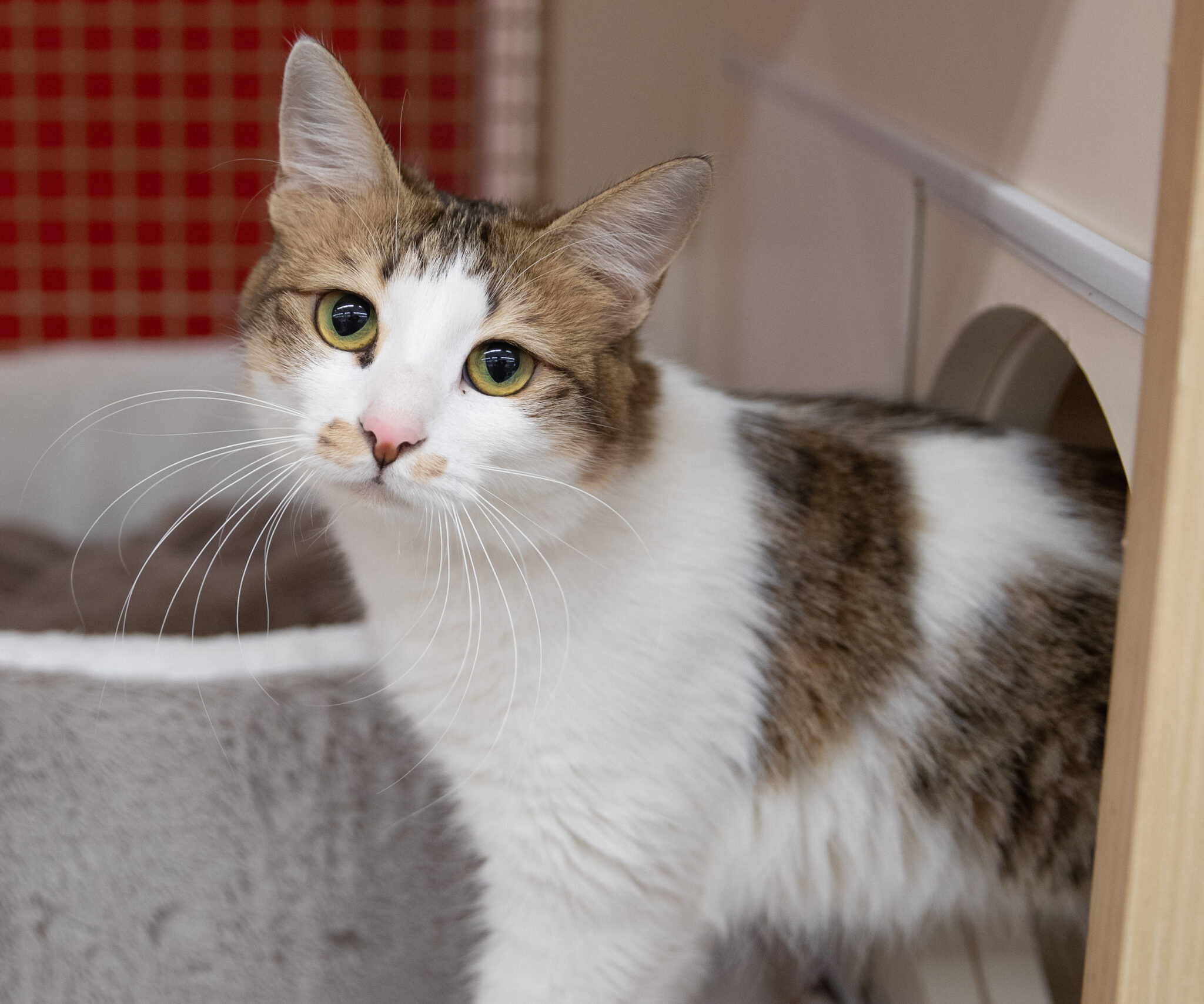For many cats, the carrier is a scary place and can be very threatening. Because of negative experiences, many cats hate being near or in carriers. They lash out at their owner when being forced into the carrier and they stress out while inside it. There may be constant meowing, crying or even bathroom issues. However, the carrier doesn’t have to be a cause of stress for any kitty. Here are 10 tips to help you conquer the dreaded cat carrier.
- Always Consider Your Cat’s Safety: A cat carrier is a necessary component of your pet’s life. Always use a carrier rather than carry the cat in your arms when visiting the vet or traveling. Carriers keep the cat from jumping from their owner’s arms if they are spooked by a dog barking, a car horn, or any number of sudden noises. A carrier should be easy to use and provide a safe way to transport you cat. There are many options and features available.
- Consider the Type of Cat Carriers: There are a number of different cat carriers to choose from, starting with the first and more traditional carrier: the hard-sided kennel. This type of carrier is usually the most ideal for transporting a cat. It protects a cat from other animals, the environment and keeps them safe and secure. A hard-sided carrier that has a front and top opening and can be disassembled quickly and easily is the ideal carrier for safety and space. This style provides multiple ways to get the cat in and out of the carrier quickly and easily. Soft or fabric-sided kennels are a common type of carrier for cats and small dogs. Some styles easily collapse for storage and usually have mesh sides for the cat to see its surroundings. There are a few things to keep in mind when choosing this type of carrier. The bottom of the carrier should be firm and be able to support the weight of the cat without bending or bowing.
- Using a Make-Shift Carrier in an Emergency: Make-shift carriers can include laundry baskets, cardboard boxes, towels and pillowcase. They should only be considered in an emergency or for an injured animal if there is no carrier available or if you find an injured or abandoned kitty in your daily travels. Helpful Hint: Years ago, my husband and I rescued a stray cat that had an abscessed foot from an infected animal bite. We were not yet official cat owners and did not have a carrier. We wrapped the cat in a towel and brought him to an emergency vet. The cat was still able to scratch and bite through a thick towel, but it was better than nothing. My husband made a quick trip to Walmart to purchase a carrier while the cat was being treated so that we could safely transport him back home.
- Choosing the Best Carrier Style for Your Cat: When choosing a carrier for your cat, keep in mind the cat’s size and needs. The carrier should be large enough for the cat to stand up and turn around comfortably. If going on a longer trip, the cat needs to have access to food, water and a litter box. It is also important for the carrier to be disassembled and able to be cleaned easily.
- The Comfort Factor: Cats always demand comfort, and a carrier should be no exception. Choosing the right size carrier is part of making your cat cozy. You should also take into account the number of openings and whether or not your cat will want to see their surroundings. Also, having more than one opening can make it easier to get your cat into and out of the carrier.
- Training Your Cat: Luckily, you can train your cat to tolerate a cat carrier. While training is best started at a young age, any cat can be taught that going into a carrier isn’t the end of the world. It’s all about getting your cat familiar with the carrier and re-enforcing that the carrier can be a safe and comfortable place.
- Getting Ready for Transport: The night before a veterinarian or grooming appointment, set the carrier out in the main room of your house so your cat has a chance to sniff and explore the carrier with plenty of time. Put the cat and the carrier in a small space like a bathroom an hour or so before departure time. This prevents the cat from hiding, making it easier to put the cat in the carrier quickly and without stress for the cat. Helpful Hint: I leave my cat carriers in the family room all the time. My cats tend to sleep inside or on top of the carriers. I’ve placed additional bedding in the carriers for additional comfort.
- The Owner Stress Factor: Cats are very empathetic and can easily reflect an owner’s stress. This impacts their willingness to enter a cat carrier. Many owners have canceled important vet appointments since they cannot get a kitty into a carrier. Helpful Hint: Make sure you prepare yourself and your kitty before a vet appointment. Always allow enough time so that the stress factor is reduced.
- Extra Love and Rewards: Every time you return from a trip using the carrier, make sure to give your cat extra love and treats as a reward. Over time, the cat will see the carrier as a safe and comfortable place. While the carrier provides this safe place for routine visits to the vet, groomer or moving, it also gives the cat a sense of security if during a time of emergency or natural disaster.
- No Cat Carrier for Me!: If your kitty refuses to get into a cat carrier and everyone in your family is stressed out, consider contacting a mobile vet. Mobile clinics can offer a wide range of in-home services. A mobile vet can provide physical exams, vaccinations, blood work, x-rays, and euthanasia. A mobile vet can also offer behavioral counseling and consultations on nutrition, weight management, allergies, diabetes management and senior health.
We hope that these ten tips can help you conquer the dreaded cat carrier which will reduce the stress factor for you and your kitty.



